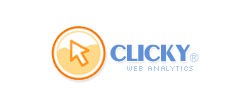By MAT BENNETT at Search Engine Journal
 Since its launch in 2005 Google Analytics has become almost unassailable in the world of website analytics, with 57% of the world’s 10,000 most popular websites using the popular site statistics suite.
Since its launch in 2005 Google Analytics has become almost unassailable in the world of website analytics, with 57% of the world’s 10,000 most popular websites using the popular site statistics suite.
Prior to the arrival of Google Analytics, the choices were largely between the inferior data of ‘server stats’ packages, lightweight 3rd party services or paying several hundred dollars a month for an enterprise level solution. Google Analytics brought powerful, accurate analytics to the masses and as site owners we lapped it up.
Tools such as Google Analytics give us the data to make smarter decisions about our websites and our businesses. Whether we are looking to increase traffic, improve conversions, conceive content ideas or do any of a myriad of other tasks, our analytics suite will often be the starting point.

 Clicky prides itself on being easy to use, in fact they confidently claim to be the easiest analytics service you have ever used. Ease of use often means simplicity and Clicky certainly doesn’t provide the depth of data that an expert Google Analytics user might expect, but to Clicky and its loyal users that is one of the key advantages! Most site owners never look at most of the in depth data and the addition of live data makes Clicky appealing to many.
Clicky prides itself on being easy to use, in fact they confidently claim to be the easiest analytics service you have ever used. Ease of use often means simplicity and Clicky certainly doesn’t provide the depth of data that an expert Google Analytics user might expect, but to Clicky and its loyal users that is one of the key advantages! Most site owners never look at most of the in depth data and the addition of live data makes Clicky appealing to many. Mixpanel is another package that headlines with real-time analytics, however it is their handling of conversion funnels that stands out for me. In particular; the ability to be able to create and analyse funnels retroactively in a way that is both quick and elegant.
Mixpanel is another package that headlines with real-time analytics, however it is their handling of conversion funnels that stands out for me. In particular; the ability to be able to create and analyse funnels retroactively in a way that is both quick and elegant.
 Open Web Analytics is the open source community’s answer to Google Analytics and has a look and feel that will be rather familiar to many. Rather than being a hosted solution, OWA is a downloadable program that you install on your server. Whist this means some extra work at the outset it does also mean retaining control and ownership of your site’s analytics data.
Open Web Analytics is the open source community’s answer to Google Analytics and has a look and feel that will be rather familiar to many. Rather than being a hosted solution, OWA is a downloadable program that you install on your server. Whist this means some extra work at the outset it does also mean retaining control and ownership of your site’s analytics data. Many site owners will be aware of Kissmetrics thank to the excellent blog they run, yet I suspect far fewer have tried their analytics solutions. Kissmetrics tries to make analytics more personal by tracking, and allowing you to easily visualise, the user life-cycle. If you’ve ever found yourself wondering why some of your site visitors are so much more valuable than others then Kissmetrics allows you to drill down to see the behaviour of individual visitors on your site and how that has changed over time.
Many site owners will be aware of Kissmetrics thank to the excellent blog they run, yet I suspect far fewer have tried their analytics solutions. Kissmetrics tries to make analytics more personal by tracking, and allowing you to easily visualise, the user life-cycle. If you’ve ever found yourself wondering why some of your site visitors are so much more valuable than others then Kissmetrics allows you to drill down to see the behaviour of individual visitors on your site and how that has changed over time.